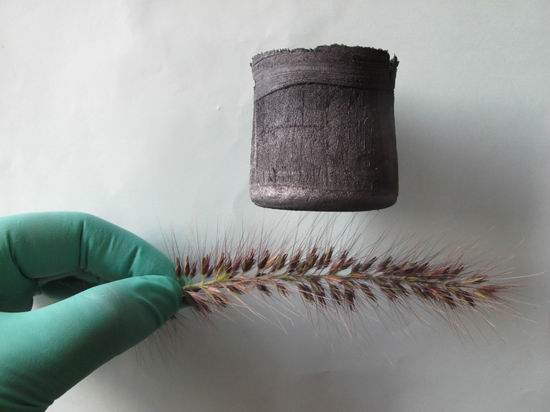Aerogel, or xerogel, is the complete skeleton remained after the removal of solvent in gel. Its integrated properties, such as porous structure, ultralow density, high porosity and large surface area, enable its wide applications in many fields, including wave absorbing materials, environmental remediation materials, high-performance catalyst and super-capacitors. Generally speaking, aerogels with a density below 10 mg/cm3 are regarded as ultra-flyweight materials. With efforts of many scientists, the compositions and attributes of aerogels have been improved since 1931, leading to its wider applications. However, the fabrication methods of aerogels have been limited to sol-gel method or template-directed synthesis strategy. Sol-gel method can achieve mass production, however with bad controllability and high-density products, while template-directed synthesis strategy can obtain low density materials with ordered structure. For instance, Ni foams with a density lower than air------0.9 mg/cm3, invented by American scientists in 2011£¬was a big hit at that time. Nonetheless, owing to the size and the refined structure of the template, mass production of the Ni foams was not achieved.

Recently, the research group leaded by Prof. Chao Gao, from DPSE of ZJU, has developed a none-template freeze drying method to fabricate ultra-flyweight aerogels. The paper was published online in Advanced Materials (Adv. Mater., 2013, DOI: 10.1002/adma.201204576). Inspired by the structure of large-sized buildings like gymnasium, they synergistically assembled all carbon aerogels, using two-dimensional nano material, namely grahenegraphene, as wall and one-dimensional carbon nano material as backbone. Mass production (such as 1000cm3) and adjustment of density can be easily achieved, with the lowest density down to 0.16 mg/cm3. And its outstanding temperature-invariant elasticity allows the material’s recovery after being compressed 80%. The material has extremely high absorption capacities higher to 215-913 times for organic liquids of different density, the highest oil absorbing capacity yet reported. Besides, the aerogels are reusable. After the publication of the paper, Nature (2013, 494, 404) gave pictured comment titled “Solid carbon, springy and light” on this work in Research Highlights.
£¨By Lucy£© |
